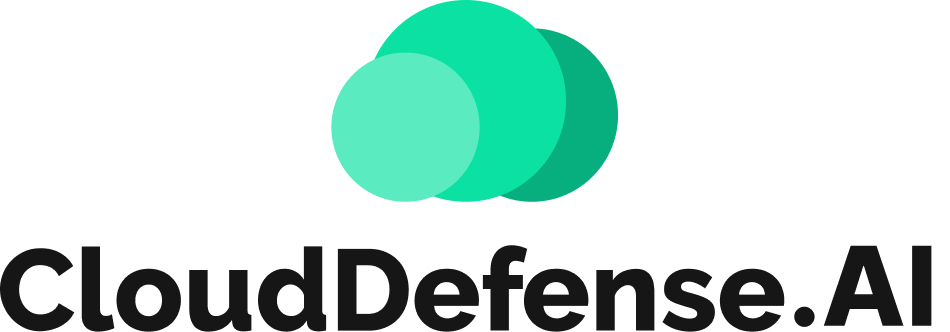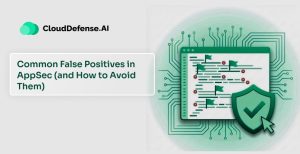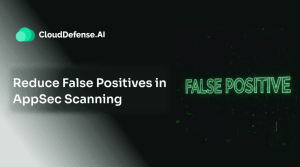Ever encountered difficulties in consistently maintaining access control policies across multiple services and applications? How can we be sure that only the right people and services have access to your cloud resources? And how can we guarantee that your security policies are enforced uniformly across a dynamic cloud environment?
These are the common pain points for many organizations, which keeps cloud security professionals highly concerned.
As modern business operations hinge heavily on cloud services and infrastructure; thus, possessing a comprehensive and flexible security solution is imperative. This is where Open Policy Agent (OPA) emerges as a potential game-changer – offering crucial assistance in tackling the challenges intertwined with cloud security.
Having said that, we will now deeply explore Open Policy Agent and its work in the further sections.
What is an Open Policy Agent (OPA)?
Open Policy Agent is a versatile and robust tool used in the IT and security domains to enforce policies and access control with remarkable efficiency. It’s like having an ultra-secure vault, and you’re faced with the task of determining who should be granted access.
In essence, it aids in the enforcement of the rules or restrictions on entities—whether they are people or apps—that can access them along with their associated data and resources.
So here’s how Open Policy Agent functions: it evaluates the policies you’ve defined in response to requests or data. Those policies are scripted in a language known as Rego, and they can range from straightforward access control guidelines to intricate logic that governs numerous facets of an application or system.
For instance, consider the scenario of cloud security. OPA can step in to manage who’s authorized to access particular resources. You can set rules such as “only permit a user with an ‘admin’ role to access sensitive data” or “block access from anyone using an untrusted IP address.”
What are the Benefits of OPA?
Centralized Policy Definition: As discussed before, Open Policy Agent offers a fantastic solution to define all your access control policies from a single, central source. With this, it is simple and straightforward for you to craft and maintain policies within one unified place. It’s almost like having a master blueprint for all your rules.
Consistency Across Services: OPA guarantees a consistent implementation of policies in every service or any application you have. Therefore, if you already have a standard such as “only admins can access financial information,” Open Policy Agent ensures that these rules are implemented throughout your entire system. This is absolutely essential to uphold security and adhere to compliance standards.
Dynamic Policy Evaluation: What makes Open Policy Agent stand out is its ability to dynamically evaluate policies according to the requests it receives. As a result, if you have implemented “users in the HR department can only access HR data during working hours’, Open Policy Agent may consider the context of the request and execute this policy immediately.
Scalability: The design of Open Policy Agent is carefully crafted to fit the size of your infrastructure. It can efficiently manage a high volume of policy evaluations, which is absolutely vital for intricate and expansive systems. Whether you’re overseeing a modest group of microservices or a multitude of them, OPA is well-equipped to accommodate your requirements.
Where Is Open Policy Agent Used?
Cloud Infrastructure and Services
The use of OPA is common in cloud environments such as AWS, Azure, and Google Cloud. It defines and enforces resource access policies, including VMs, storage, and databases. Operation of these resources is done by operating agents such that no unauthorized user may have access to them.
Microservices and APIs
Microservices-based applications or APIs can be secured by deploying an OPA. This enables the fine-grained specification of developer policies for access control. This simply implies that you will know what people should be allowed to do in a particular application. I
Kubernetes and Container Orchestration
Open Policy Agent can specify policies on resource sharing, network connectivity, and access authorization among containers and other resources in Kubernetes and other container orchestration systems. This is because it guarantees the strict security of containers and pods by enforcing rules like denying access to sensitive configuration data or only allowing trusted image deployment.
Databases
Open Policy Agent doesn’t just work on the front lines. It also ensures that policies of access are enforced within database systems. It can limit an individual’s ability to read or edit data within a database. For example, with OPA, you can enable only authorized users to see particular tables or fields to preserve the quality and safety of data.
Custom Apps
Even if you’re not dealing with big platforms or services, Open Policy Agent can still be your policy enforcer. You can embed OPA in your own applications to define and enforce custom policies, ensuring your app behaves just the way you want it to. It’s like having your very own rulebook for your personal playground.
How Does an Open Policy Agent (OPA) Work?
Consider that you are implementing the payment service in your new application, which is responsible for handling customer transactions. Let’s take an example of using Open Policy Agent to enforce the authorization Policies Payments service. Here’s how OPA works based on this reference:
- Authorization Request:
- Assume, for example, you need to get the list of payments that your customer, Jane, made, from the Payments service.
- You send a GET request to the Payments API with the path “/payment/jane.”
- You also append your credential information to the Authorization header in your request.
- Query to OPA:
- The Payments service, before processing your request, queries OPA for an authorization decision.
- This query is comprised of various other attributes that include the HTTP method utilized (get), path (“/ payment / jane”), user (you), and any other meaningful context information.
- Policy Validation:
- OPA receives the query from the Payments service and validates it against a set of predefined policies.
- These policies are customized to suit the needs and access control rules for your application.
- Policy Evaluation:
- Now, through OPA, the attributes and the contexts are compared against set policies. For example, it confirms that you have the relevant authorizations for accessing Jane’s payment details.
- Now, through OPA, the attributes and the contexts are compared against set policies. For example, it confirms that you have the relevant authorizations for accessing Jane’s payment details.
- Decision:
- Following policy assessment, OPA makes the decision based on the policies and context.
- It sends a response back to the Payments service with one of two outcomes: “allow” or “deny.”
- OPA will respond “allow” if it finds that your request meets the policies and allows the Payments service to execute it.
- If your request does not meet the authorization criteria in the policies, OPA responds with “deny,” and then the Payments service rejects that request.
- API Response:
- After receiving a decision from OPA, the Payments service acts in accordance with your request.
- If OPA allows the request, you will receive the JSON array with the payment data you requested.
- If OPA denies the request, you will be informed that you are not authorized to access the payment information.
- After receiving a decision from OPA, the Payments service acts in accordance with your request.
How to write your first OPA policy?
Writing your first OPA policy involves defining the rules and conditions that determine whether a particular action or request should be allowed or denied.
OPA policies are written in a domain-specific language called Rego. Here’s a step-by-step guide to writing your first OPA policy:
- Install OPA:
Before you start writing policies, make sure you have OPA installed on your system. You can download it from the official OPA website. - Create a New Policy File:
Create a new text file with a “.rego” extension. This file will contain your OPA policy rules. - Define Your Policy Rules:
Open the “.rego” file in a text editor and define your policy rules. OPA policies are written in Rego, a declarative language. Here’s a simple example to get you started:
package example
default allow = false
allow {
input.method == "GET" input.path = ["payment", "jane"]
}
In this example, we define a policy in the “example” package. We set the default value of “allow” to false, meaning access is denied by default. However, if the HTTP method is “GET” and the request path is “/payment/jane,” access is allowed.
- Understand the Policy:
- In the policy, “input” represents the attributes provided when making an authorization decision. In your use case, it could include attributes like “method” and “path” from the request being made.
- The “default allow = false” line sets the default action to deny, ensuring that access is denied unless the conditions specified in the “allow” rule are met.
- The “allow” rule specifies the conditions that must be true for access to be allowed.
- Save the Policy File:
- Save the “.rego” file with a meaningful name, such as “payment_policy.rego.”
- Load the Policy into OPA:
To load the policy into OPA, you can use the OPA command-line interface (CLI). Run the following command to load the policy:
opa load <path_to_your_policy_file>
For example:
opa load policy/payment_policy.rego
- Test the Policy:
You can test the policy by making sample requests and observing the decisions made by OPA. For example, you can use the opa eval command to test your policy against specific input data.
opa eval --data policy/payment_policy.rego --input '{"method": "GET", "path": ["payment", "jane"]}' 'data.example.allow'
- This command evaluates the policy for the provided input data and checks if access is allowed. It should return true if the conditions in your policy are met.
- Integrate with Your Application:
Finally, integrate OPA with your application or service to enforce the policy. You can make authorization decisions by querying OPA with the relevant attributes, such as the HTTP method and request path, and act accordingly based on the decision returned by OPA.
FAQ
What is the role of OPA in DevOps?
DevOps significantly relies on OPA for its provision of policy-based access control and authorization. Enforcing policies related to infrastructure as code (IaC), continuous integration/continuous delivery (CI/CD) pipelines, and container orchestration, ensures that both infrastructure and application deployments adhere strictly to defined protocols. This boosts security standards while ensuring regulatory compliance.
When should I not use the Open Policy Agent?
Large companies with intricate policy requirements benefit most from OPA; however, your organization might not require it if its policies are straightforward and manageable by existing rule engines. Therefore, evaluate the potential impact on system performance as OPA’s processing could introduce overhead.
Conclusion
To conclude, when organizations leverage Open Policy Agent (OPA) to enhance cloud security, they strategically empower themselves with the ability to enforce fine-grained and dynamic access control. The flexibility of OPA—its capability to manage complex policies across a variety of cloud environments and services—proves invaluable for securing infrastructure within the cloud.
Now, as we’ve explored the immense benefits of Open Policy Agent in strengthening your cloud security posture, it’s time to take your cloud security to the next level. At CloudDefense.AI, we present Cloud Security Posture Management (CSPM) as an integral element within our Comprehensive Cloud-Native Application Protection Platform (CNAPP). Through our CSPM solution—enhanced with real-time visibility, automated compliance checks, and actionable insights—you can strengthen your cloud security significantly. Don’t wait, book your free live demo today!







